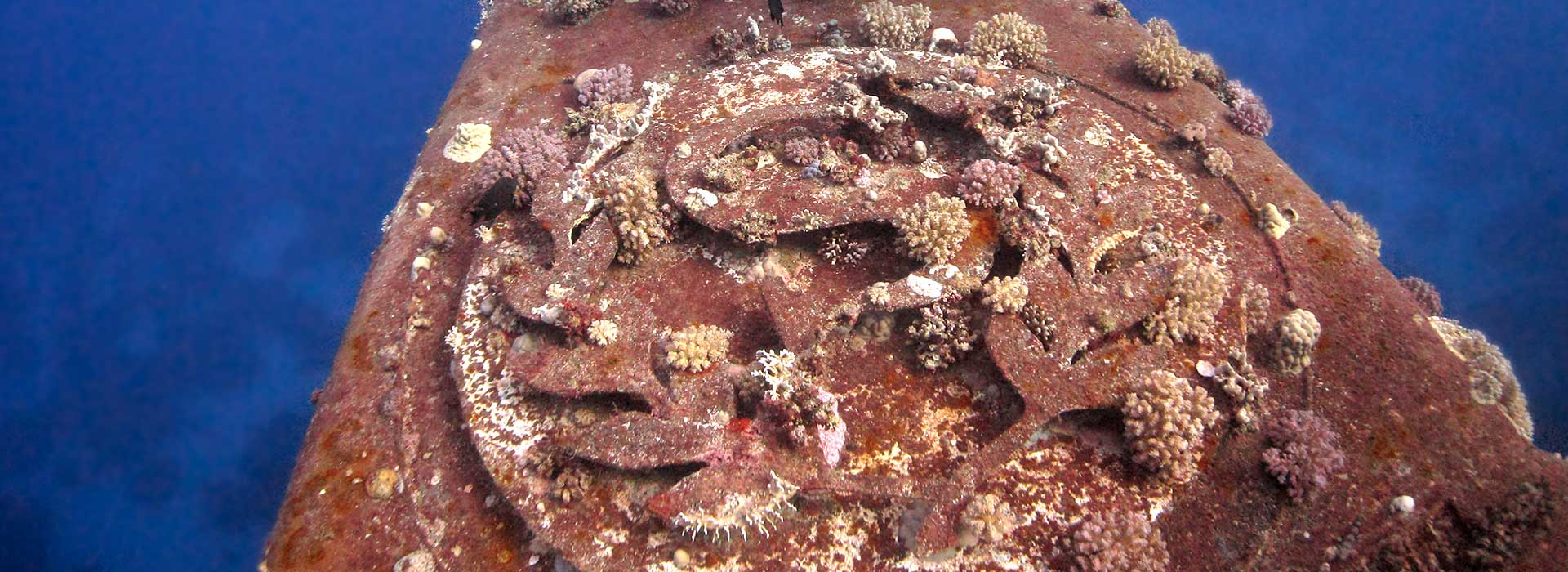Salem Express. Wreck in the Red Sea, Egypt

Coordinates: 26.39.01 N 34.03.48 East Hindman Reef southeast of Safaga Minimum depth 10 meters Maximum depth 30 meters.
About Salem Express Ferry
The ferry ship was launched in 1976 at the French shipyard Constructions Navales et Industielles de la Mideterranee et la Seine under the name Fred Scamaroni (in honor of a prominent figure in French WWII resistance, an associate of Marshal de Gaulle). After changing several owners and names, the ship became the Salem Express in 1988. The Salem Express was 100.3 meters long and 18 meters wide with a draft of 5 meters with ballast. Which makes the vessel one of the largest wrecks in the Red Sea. The ferry was powered by 4 eight-cylinder diesel engines of French production.
Last Salem Express Route
On December 16, 1991, Salem Express passenger ferry departed from the port of Jeddah (Saudi Arabia) to the port of Safaga (Egypt) with several hundred passengers on board. The vast majority of the passengers were pilgrims returning from Mecca. Like all Muslims who perform the Hajj, Salem's passengers were dressed in their best clothes. A festive atmosphere reigned on the ship. The ship's captain, Hassan Moro, was an experienced sailor. A former professor at the Egyptian Navy Academy, in 1988 Hassan Moro became the captain of Salem Express ferry. Working for many years on the Jeddah-Safaga line, he got into the habit of shortening the route by guiding the vessel between the Hindman Reefs and the African coast. The time saved was about 2 hours.
The standard approach to the port of Safaga is seaward around the northern tip of Panorama Reef. After loss of Salem Express, this route became mandatory for large ships.
So, on December 16, 1991, Salem Express set off on its last crossing. Ahead lay 450 nautical miles of the Red Sea. By nightfall, the weather began to deteriorate. The wind reached hurricane force. Waves rose. Captain Moreau understood what it was like for the passengers of his ship. And especially for the deck passengers, who made up the majority. In an attempt to hide behind the reefs, Captain deviated from his usual course. Midnight was approaching. In the stormy sea, it was impossible to see the reefs. All of the above led to the fact that the ferry ran into the southern tip of Hindman Reef.
The result of the blow was twofold: a hole in the bow and a dropped ladder hatch at the stern of the ferry. Water poured into the vessel from both sides and it heeled to starboard. The Salem Express sank within 20 minutes to a flat bottom at 30 meters depth.
Several smaller vessels were anchored on the leeward side of the reef. However, the speed with which the disaster occurred and the stormy sea did not give them the opportunity to come to the aid of those in distress.
Salem carried 578 passengers and 72 crew members. Most of them died in the first minutes of the disaster. Lifeboats and life rafts were not launched and everyone in the water was left to themselves. Only about 180 passengers were able to reach the shore by swimming. The official list of victims is 470. Captain Hassan Moro died with his ship.
During the rescue operation, Navy divers have managed to recover many bodies. But the danger of working in remote parts of the ship became too great. As a result, Egyptian Navy divers welded passages to the lower levels of the ferry, leaving many bodies in their underwater grave.
Diving on the Salem Express
Usually, divers arrive at the site of a ferry wreck during a liveaboard safari and diving is done from the RIBs. Diving this wreck is generally not difficult. The upper part of the wreck is accessible to certified Open Water divers. Attempts to get inside the wreck are not recommended for divers of any level.
Salem Express rests on flat ground at a depth of maximum 32 meters. The ferry lies on the starboard side. The aft ladder hatch is open. The port side of the ferry faces the surface and has a depth of 10-12 meters. Large square windows run along the entire board. Some of them are open. Behind the railing there is an open deck passage. There are also many doors leading to the interior of the vessel. All the doors are welded shut.
Closer to the bow of the vessel is the captain's bridge, and immediately behind it are two massive pipes connected by a lintel. The company logo in the form of a large letter "S" is attached to the pipes.
Behind the chimneys was an open deck with a plastic awning. The remains of this awning lie in great numbers on the bottom near the ship. Penetration into the vessel through the aft ladder hatch is not difficult. However, the sight of hundreds of rolls of mattresses and blankets (less wealthy pilgrims in Mecca are accommodated in bare army tents, and so they carry a bed with them), coupled with broken suitcases, leaves a very gloomy impression.
The wreck is overgrown with hard corals and the numerous inhabitants of the reef gradually make it their home. Over time, Salem Express will become part of Hindman Reef, which sank it on a December night in 1991.
Afterword
The moral legitimacy of diving on wrecks, which have become the grave for hundreds of people, is not obvious. We leave it to the divers to decide whether or not to dive on Salem Express.

 Diving in Sharm el-Sheikh
Diving in Sharm el-Sheikh